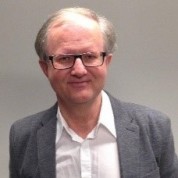Linköping University, Sweden

Prof. Magnus Willander
Bio
Prof. Magnus Willander is active in the area of synthesis, characterization and applications of nanomaterials. He is working on both solid and soft materials. Magnus Willander is working particularly on applications for energy materials, sensors materials, optical and electrical materials. He covers physical and chemical aspects. In the 80s and 90s Professor Willander did pioneering work on Si/SiGe and polymer devices, tunneling devices etc. He covered experimental, theoretical and mathematical aspects in these areas. He has been a chair professor in Gothenburg university and Linköping university and visiting professor/scientist in many different countries. Professor Willander also spent 5 years in international big industries working on predevelopment. He also started up several entrepreneur companies and worked in entrepreneur companies. He has published more than 1000 scientific papers, 10 international scientific books and he has about 20 000 citations (Google scholar). He has guided more than 50 students to their PhD degree.
Project
RP5: Sensor for pathogens monitoring in water and food (ESR5, LiU)
The microorganisms (pathogens) which include fungi, bacteria, viruses, protozoa and worms cause disease in humans and other warm-blooded animals and are transmitted from one organism to another. These transmissions mainly occur by contamination of food/water or by direct contact. To measure the sanitary quality of water for agricultural, industrial, and water supply purposes, the fecal indicator bacteria such as Escherichia coli, fecal coliforms and fecal streptococci are typically used. These bacteria survive few hrs or days in surface water and live long in ground water due to protection from sunlight and predators. For drinking water, water purification is required to avoid the microorganism. However, there is no clear way to associate (1) risk of disease and the presence of fecal indicator bacteria which present in ground water and (2) no report of relation between the presence specific pathogens and of fecal indicator bacteria. In addition to this, for the growth of microorganism, an optimum pH level is more favourable. Hence, this project will develop innovative amperometric sensors to monitor the pathogens in the surface and ground water and determine their relationship with other parameters of water quality.

